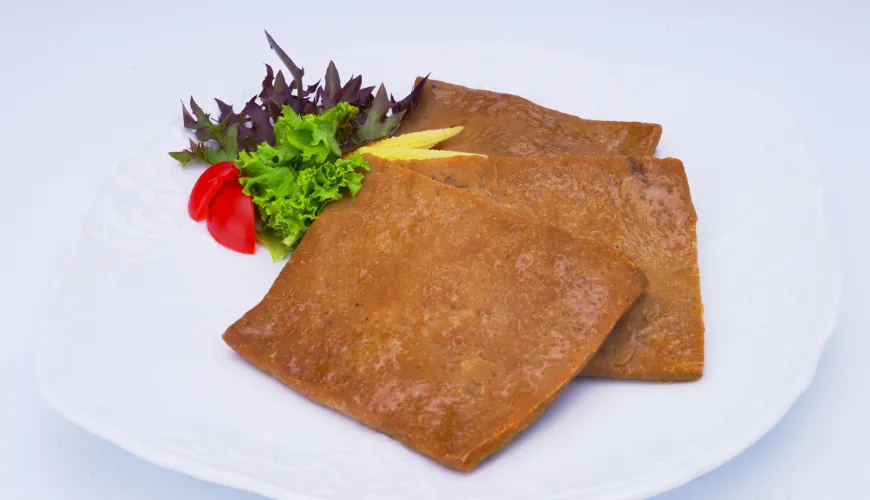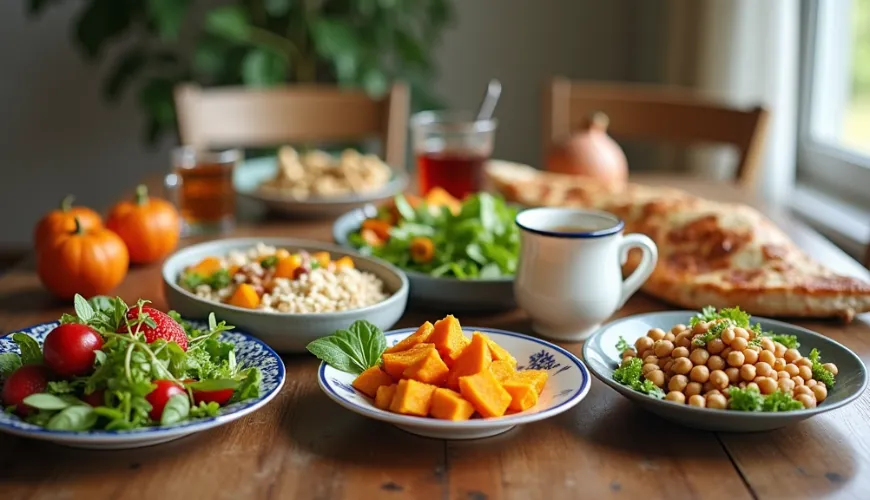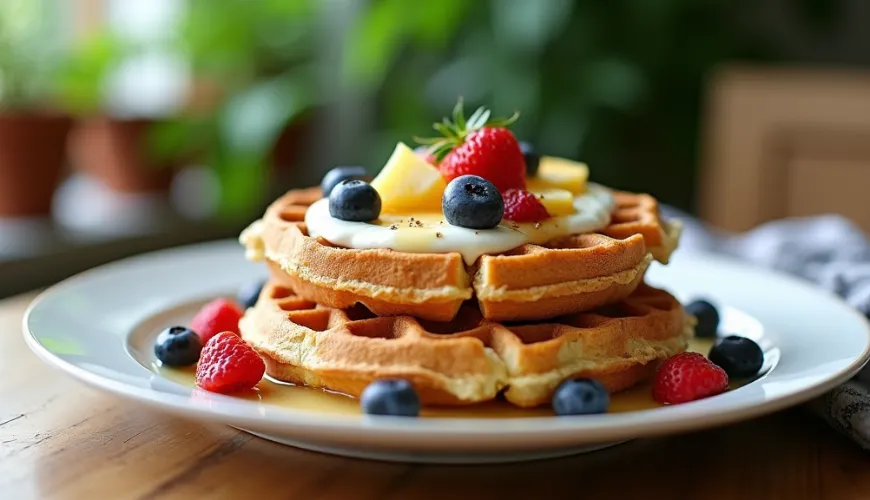
A diet for gout is key to better health and well-being

How to Eat with Gout - A Practical Guide to a Diet that Relieves Joints and the Body
Gout is a metabolic disease affecting an increasing portion of the adult population, not just in the Czech Republic. It is often associated with painful joint swelling, limited mobility, and the need for long-term treatment. However, it is less often mentioned that diet plays a crucial role in its progression—and adjusting your diet can be the key to significantly improving your health. While some foods can trigger or worsen gout attacks, others provide relief and help stabilize uric acid levels in the blood.
It's no wonder that the topic of gout diet is a frequent inquiry in doctors' offices and online searches. But what does such a diet look like? What should a suitable diet for gout include, which foods belong on the "allowed" list, and which are better completely avoided? And what if you are dealing with diabetes in addition to gout—is there even a compromise solution?
What is Gout and Why It Hurts
Gout, also known as podagra, is caused by excessive uric acid levels in the blood, which deposit as crystals in the joints. This leads to painful inflammation, often in the big toe, ankle, or wrist. Uric acid is produced when purines—substances naturally found in the body and also in food—are broken down.
A healthy body can handle purines without problems. The issue arises when their intake is consistently high or if the body cannot efficiently eliminate uric acid. The result is a condition called hyperuricemia, which in many cases leads to gout. Since approximately 70% of uric acid is produced in the body from processing purines from food, diet plays a truly crucial role in managing gout.
Basics of a Gout Diet
When creating a diet plan, it's essential to focus on limiting foods high in purines. These include red meat, organ meats, certain types of fish (e.g., sardines, herrings), seafood, alcohol (especially beer), and strong meat broths. A suitable gout diet often includes predominantly plant-based foods, light proteins, and plenty of fluids.
Foods that are good to include in the diet are primarily vegetables (but preferably avoid large amounts of spinach, asparagus, and peas), fruits, whole grains, or low-fat dairy products. Eggs are not an issue, and you can occasionally enjoy lean chicken or turkey in smaller portions. Legumes and a small handful of nuts or seeds are also suitable—just everything in moderation.
A very important aspect is also hydration, as it supports the excretion of uric acid through urine. Water, unsweetened teas, or water with lemon are suitable. On the other hand, sweet sodas and alcohol should be completely excluded—especially beer, which contains high levels of both purines and alcohol.
Gout Diet and Diabetes
The situation is complicated when a patient is dealing with both gout and diabetes. These two lifestyle diseases often occur together—they share similar risk factors, such as overweight, sedentary lifestyle, and poor diet.
In this case, it's necessary to find a balance between limiting purines and simultaneously controlling carbohydrate intake, especially simple carbohydrates. A diet for a person with gout and diabetes must therefore be even more carefully thought out. Priority should be given to low-glycemic foods like vegetables, legumes (in moderate amounts), whole grain products, and proteins with low purine content—such as cottage cheese, yogurt, eggs, and tofu.
In practice, this means, for example, replacing regular white bread with rye bread, limiting potatoes and pasta, and also monitoring fruit amounts. Despite this, such a diet can still be prepared in a tasty and varied way.
Sample Gout-Friendly Menu
To make the article as practical as possible, we provide a sample meal plan that can serve as inspiration for creating a gout diet. This is for one day, taking into account the main principles mentioned above:
Breakfast: Oatmeal with plant-based milk, apple, and cinnamon, a handful of walnuts, unsweetened mint tea
Snack: Low-fat yogurt with flaxseeds
Lunch: Baked pangasius fillet, mashed potatoes with olive oil, steamed carrots
Snack: Whole grain bread with avocado and sprouts
Dinner: Vegetable risotto with broccoli and pumpkin, salad with pumpkin seeds
Drinks throughout the day: water with lemon, herbal tea, unsweetened fruit tea
Such a gout-friendly menu not only considers a low purine content but is also balanced and sustainable in the long term. And what if you run out of ideas?
Simple Recipes Suitable for Gout
A diet for gout doesn't have to be boring. You can create delicious and simple meals from basic ingredients. Here are two quick recipes suitable for a gout diet:
Creamy Red Lentil and Carrot Soup
Ingredients:
- 1 cup red lentils
- 2 carrots
- 1 onion
- 1 tablespoon olive oil
- salt, pepper, turmeric
Instructions: Sauté the onion in oil, add sliced carrots, and briefly sauté. Add lentils, cover with water, and cook for 15 minutes. Season with salt, pepper, and turmeric, and blend until smooth.
Salad with Roasted Pumpkin and Chickpeas
Ingredients:
- 1/2 small Hokkaido pumpkin
- 1 cup cooked chickpeas
- arugula
- sunflower seeds
- olive oil, lemon juice
Instructions: Cut the pumpkin into cubes and roast until golden. Mix with chickpeas, add arugula and seeds, and drizzle with olive oil and lemon. Light, nutritious, yet delicious.
Table as a Helper
For those who want a clear overview of which foods are suitable and which to avoid, a gout diet – clear table is helpful. It can be found in various online sources, such as the National Institute of Public Health or specialized websites focused on metabolic disorders. It's useful to print such a table and keep it visible in the kitchen—especially at the beginning when it's challenging to immediately orient yourself to new rules.
Myths and Reality
One common myth is the belief that tomatoes harm gout. However, scientific studies have not yet proven that they significantly affect uric acid levels. On the contrary, they contain valuable antioxidants and can be part of a varied diet.
Similarly, the effect of sweetened drinks is often overlooked—not only do they contain sugar, but some (e.g., cola drinks) also contain fructose, which can increase uric acid levels. Opting for plain water or unsweetened herbal tea is much safer.
As renowned nutritionist Michael Greger says: “It's not just about what we remove from our diet, but mainly about what we add to it." And this is especially true for gout—the emphasis on freshness, plant-based components, and simplicity of preparation can not only alleviate symptoms but also contribute to overall well-being.
In a world full of possibilities, a gout diet is not only a therapeutic tool but also an opportunity to learn to eat differently—more consciously, healthily, and with regard to one's body. And even though it may initially seem like a limitation, it is actually a path to greater freedom—without pain, without unnecessary medications, with a zest for life.

